Blown Snow.
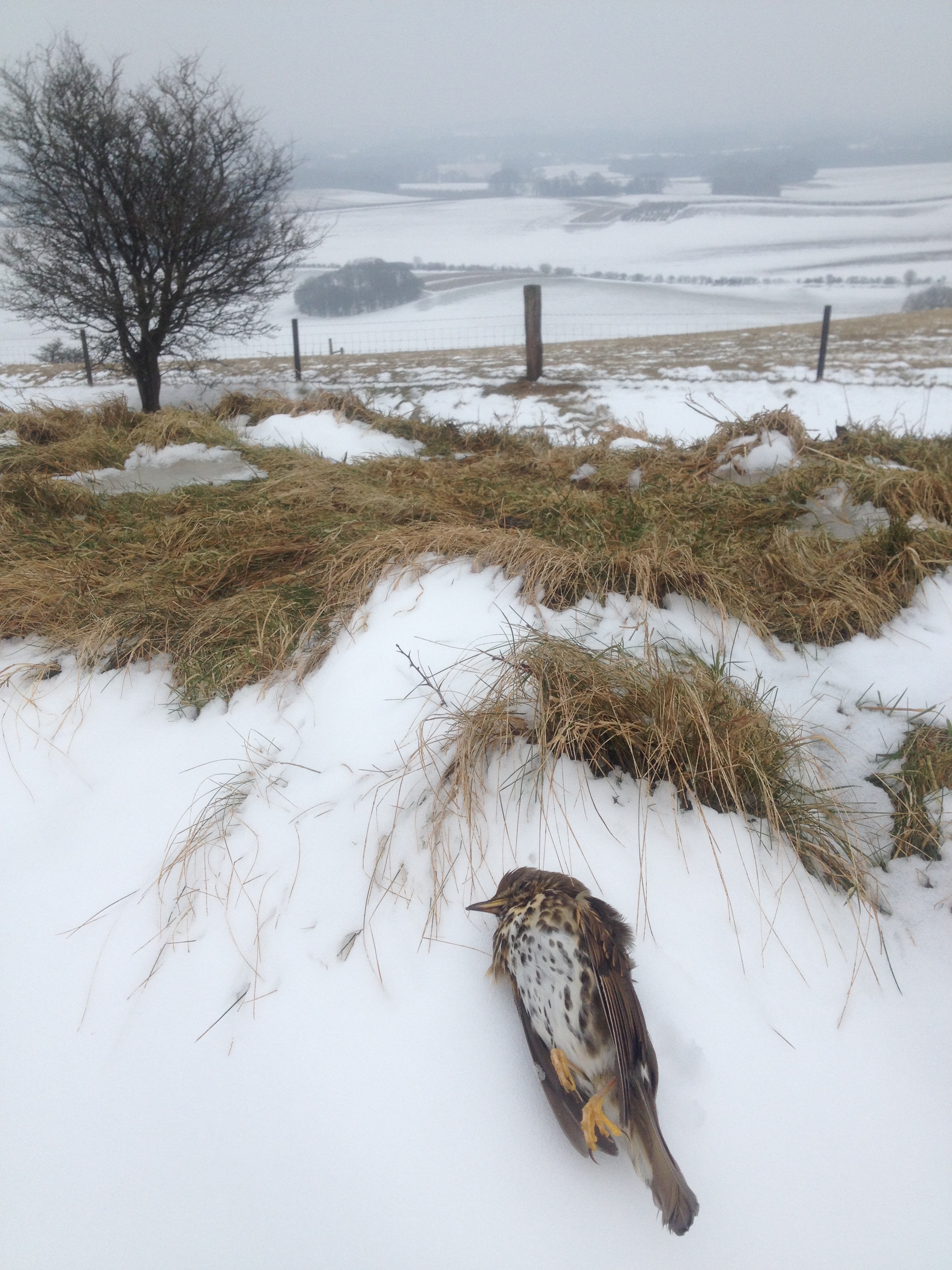
In the hours and days before the snow, we barrow water round to the horses as tap, trough and water buckets freeze. The temperature falls to -9 at night.
A prelude of snow falls hard and fast, turning the tarmac white in the time it takes to open Mum’s gate.
We go out in the Land Rover to feed the wild birds, piling it onto snow rather than spinning it out, where it would get lost. Flocks of linnets, yellowhammers and chaffinches descend. Displaced lapwings fly over. Ravens sit low in a tree, their enormous, buzzard-size presence magnified by the snow. They drop onto a rabbit carcass; although, when we pass it and they lift, I spot tiny cloven hooves, no bigger than my thumb: a small muntjac fawn, just weeks old. I wonder if the cold killed it.
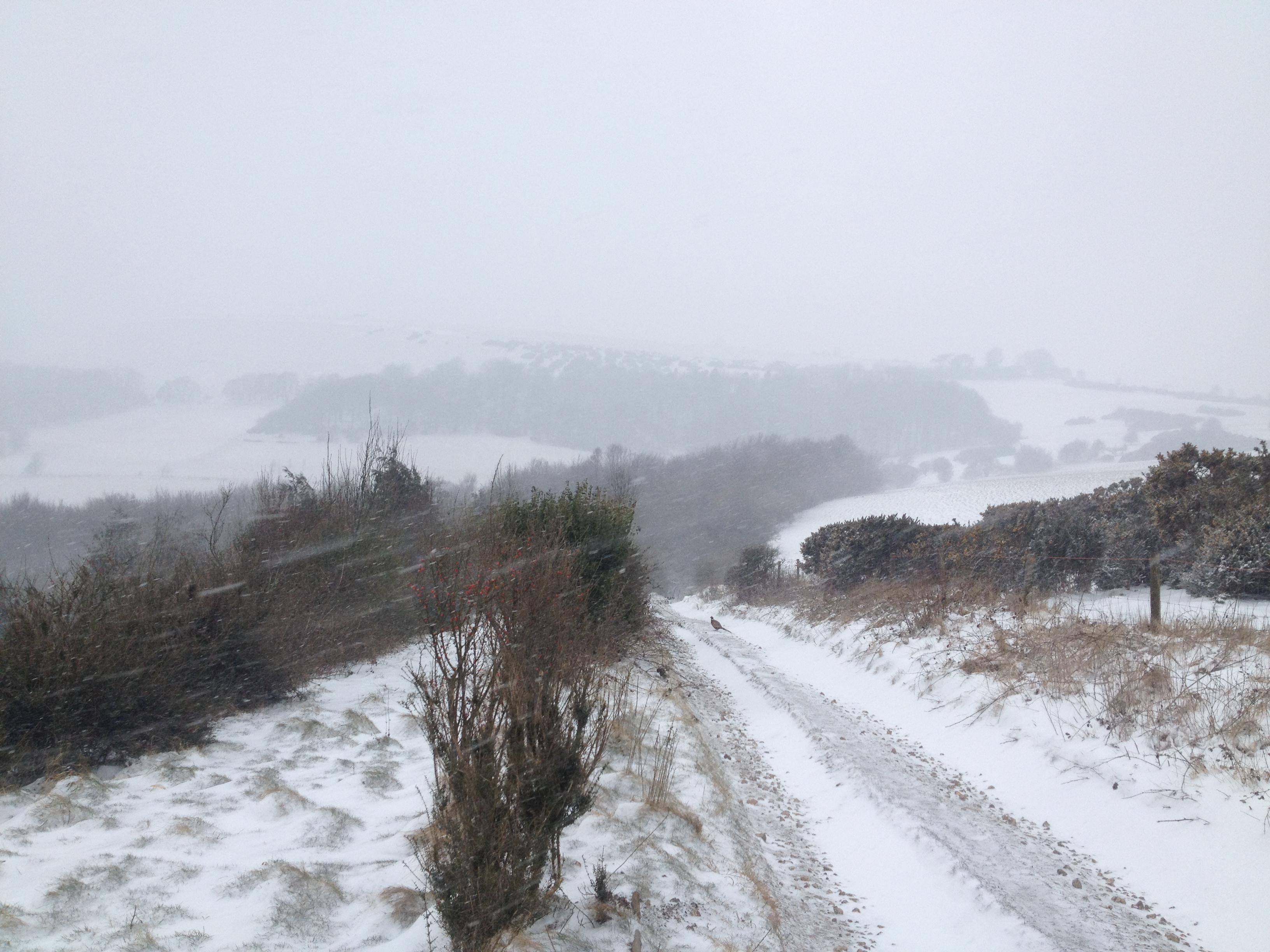
Blowing snow is new. The open fields are just skimmed with small hard grains and snow devils spiral up to blow away into Wiltshire. We sledge into it, all five of us crammed into a decommissioned orange rescue stretcher.
Around the badger sett, snow reveals which entrances are in use and which shared by a fox. Overnight, a polecat has bounded between my own footprints: a personal, invisible snow daemon. Here is a map of unseen accompaniment. Where a hare has sprinted away, I measure three of my strides to its one. My son Billy laughs that he and I share the same ratio: at 16, he is the hare.
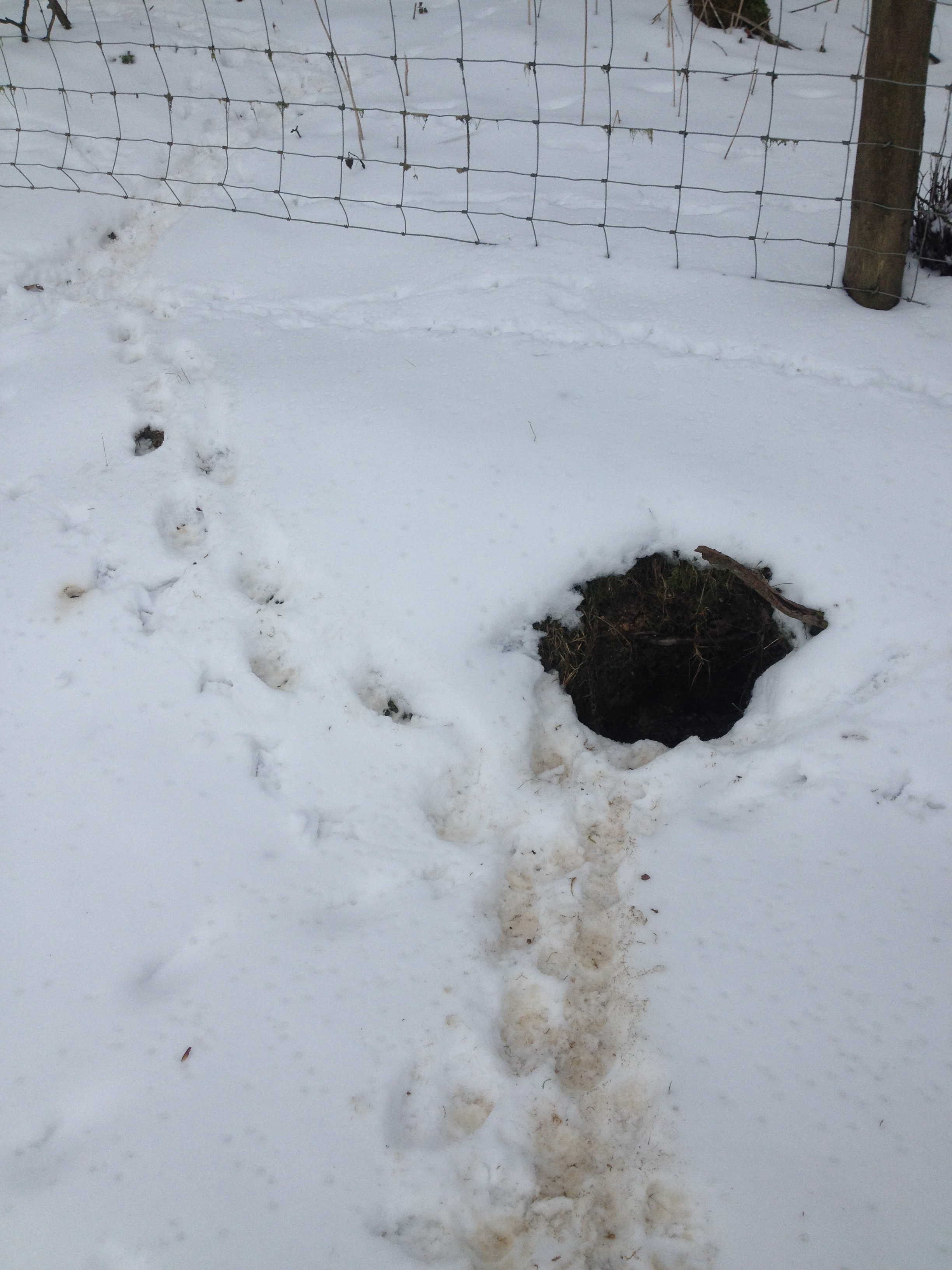
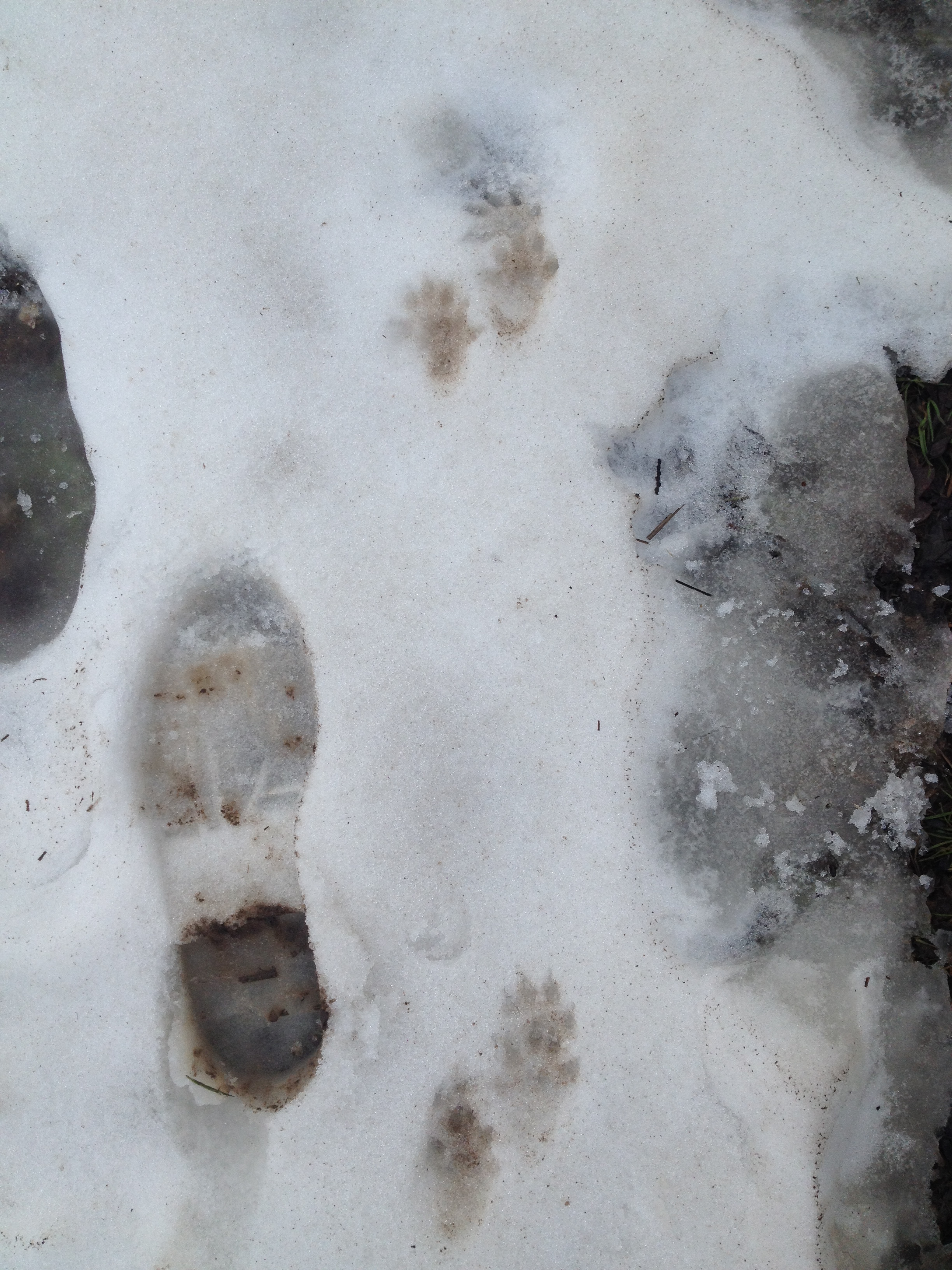
After a day and a night of driving snow, the drifts are spectacular, the lanes impassable. The beast has rudely pushed snow through inadequate, flailed hedges and made strange shapes; lips, tongues, strudles, folds, drapes, pleats and ruffles. As if a giant’s linen cupboard has been tipped out.
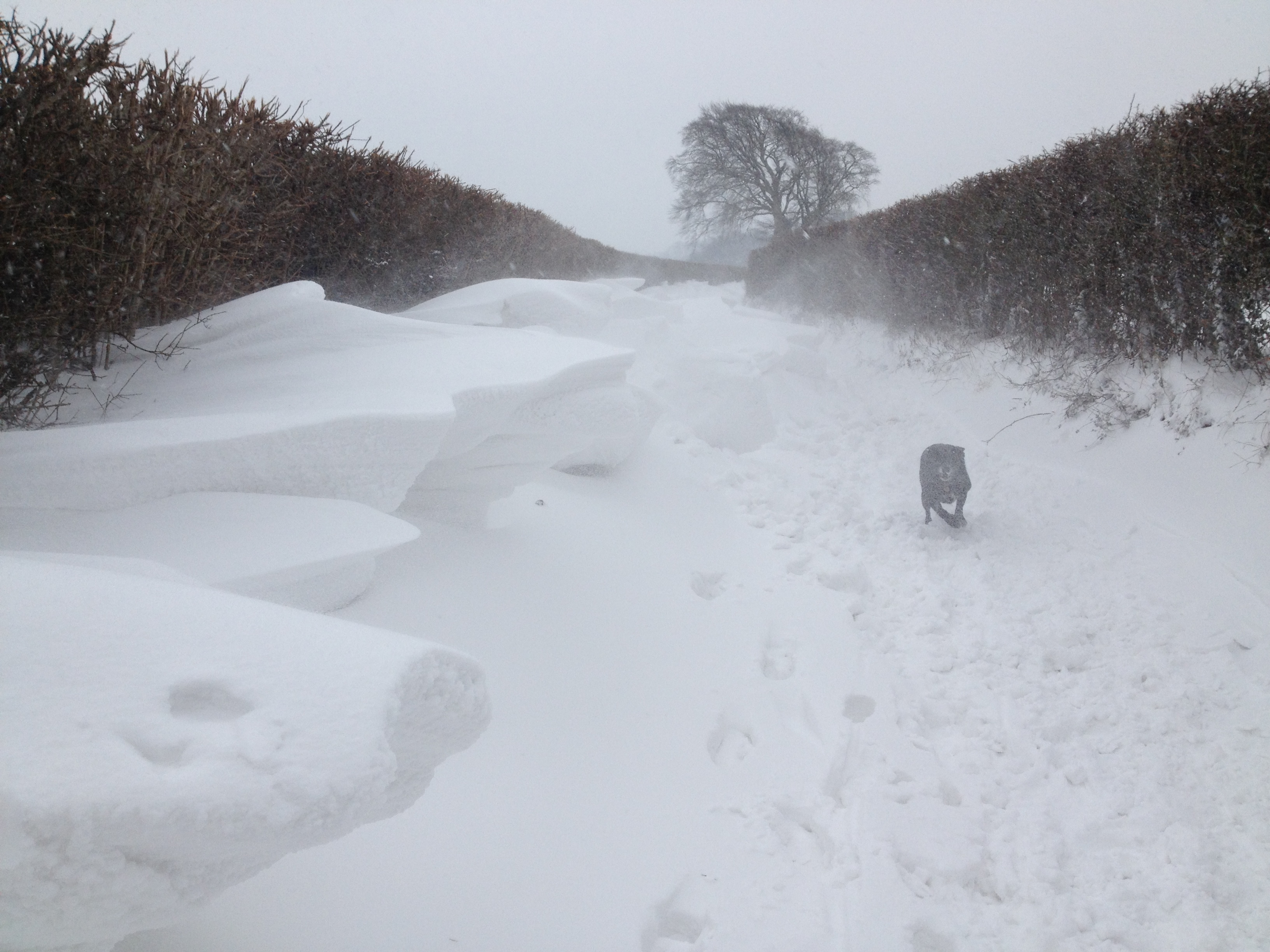
At the foot of the down the drifts rear and plunge like surf from a glacier, forcing a kind of pristine, glacial junkyard ahead of it. Wind-carved shapes are knife-edged and animated; here is the prow of an icy cruise liner, the cockpit of a boat plane, the snowboard of The Polar Express, the remains of Franklin’s lost expedition. A flotsam and warning from the sinking Arctic.
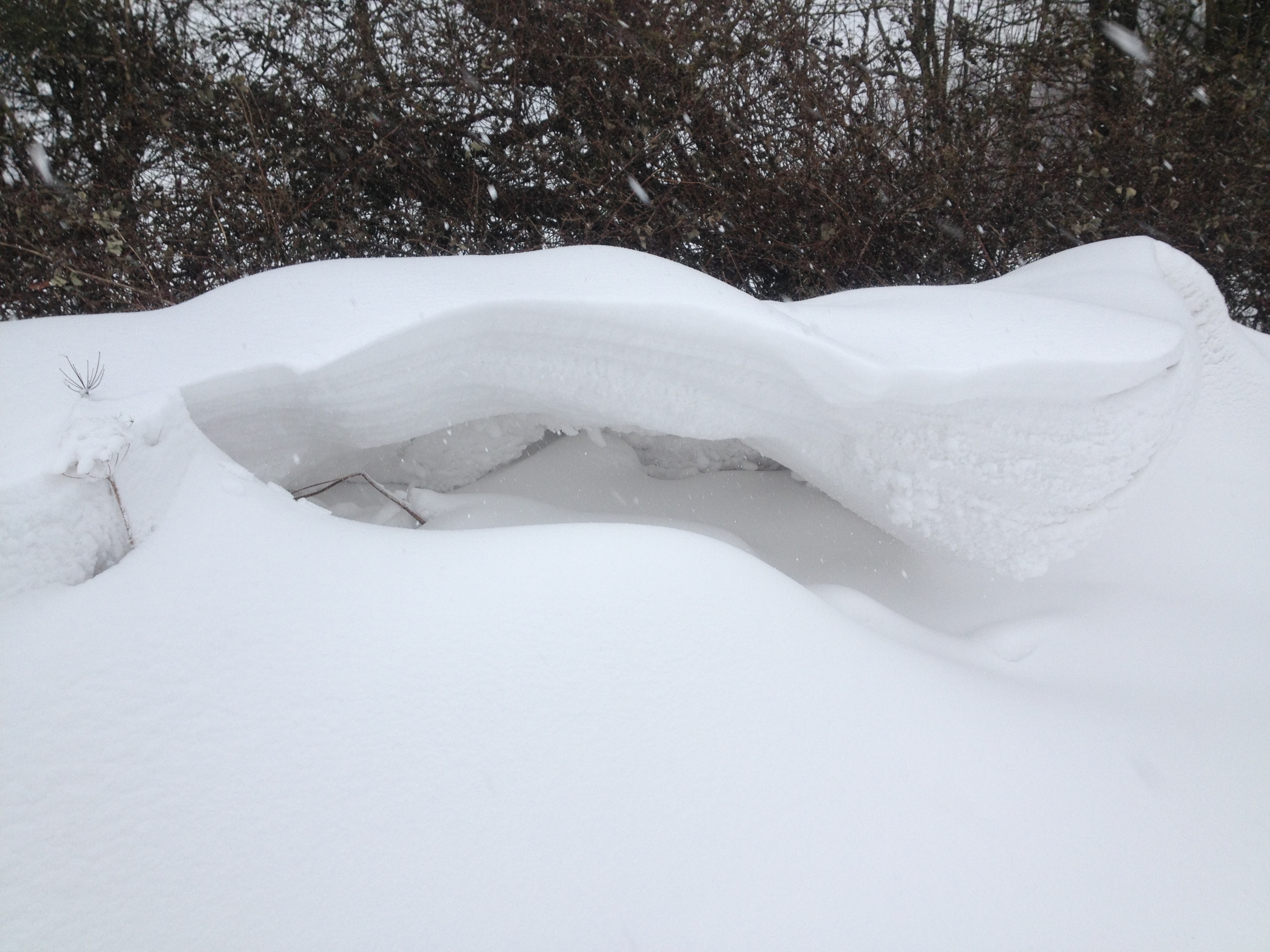
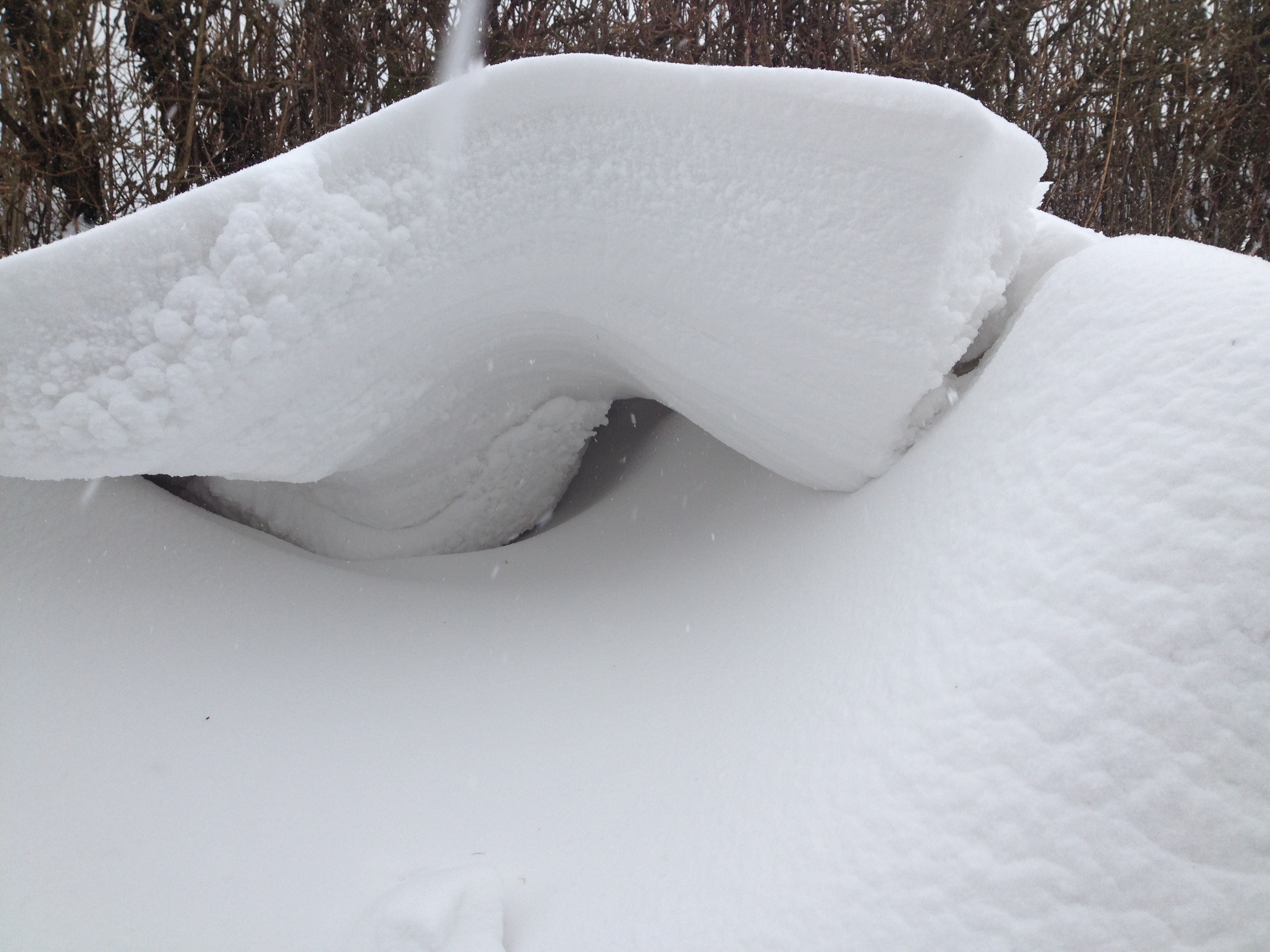
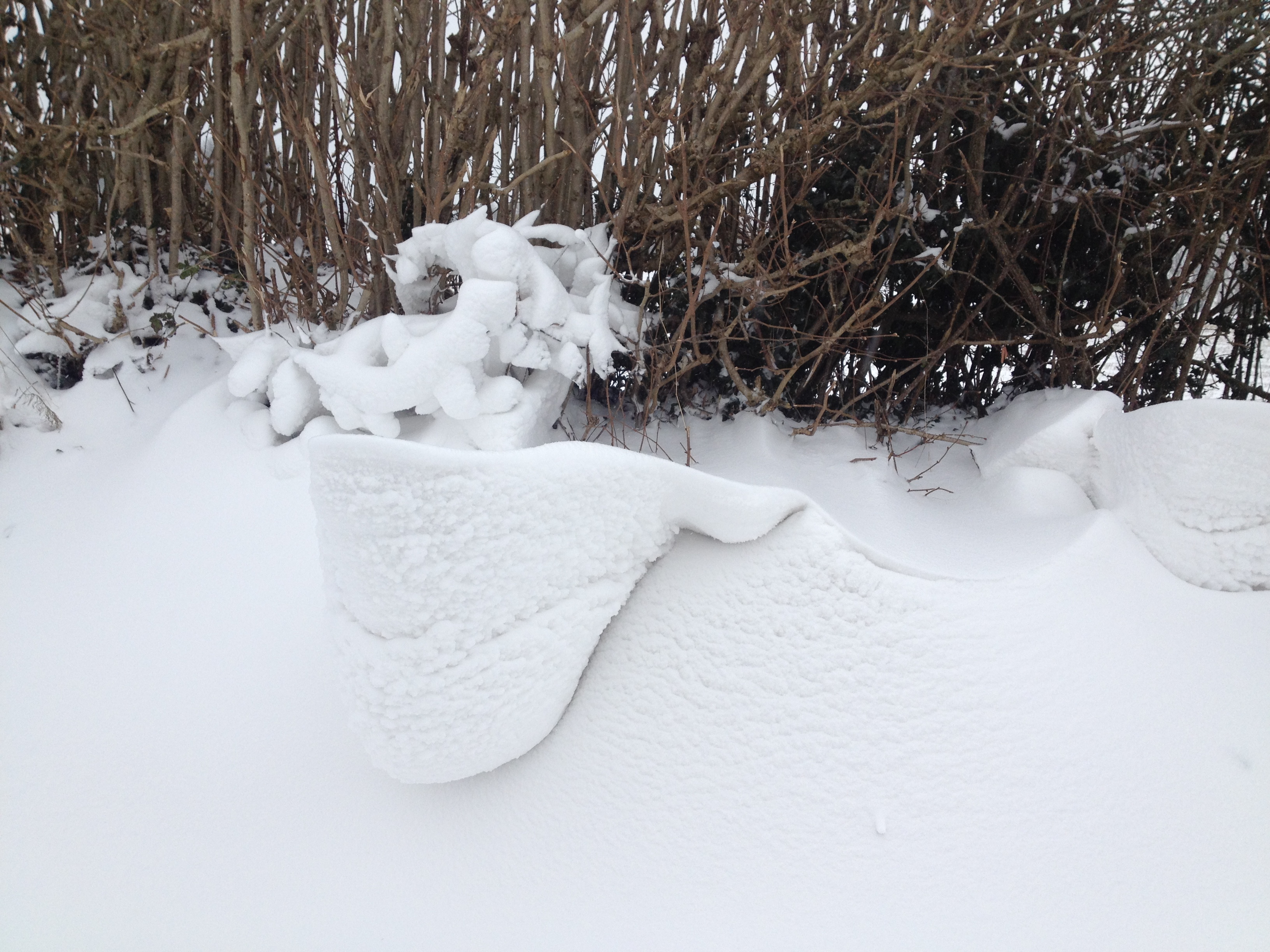
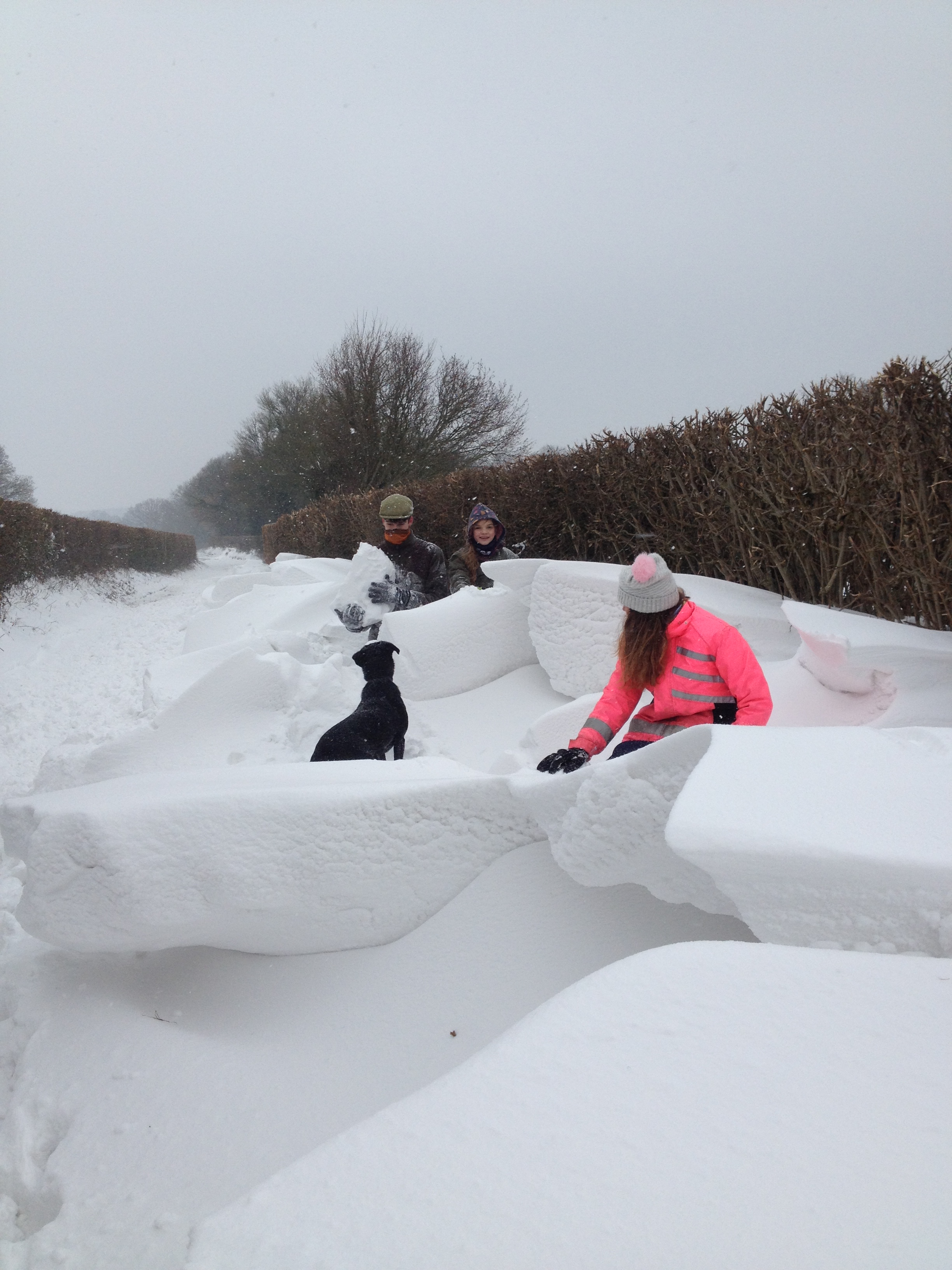
On the down, we walk above a vanished road stippled with fenceposts. Snow has filled in the hillfort’s deep, deep ditches. The anthills have become a sunk, bare-headed army of wild-haired Celts, lined up to face down the Siberian wind. We hide our faces with our hands, scarves no match for the sting of it.
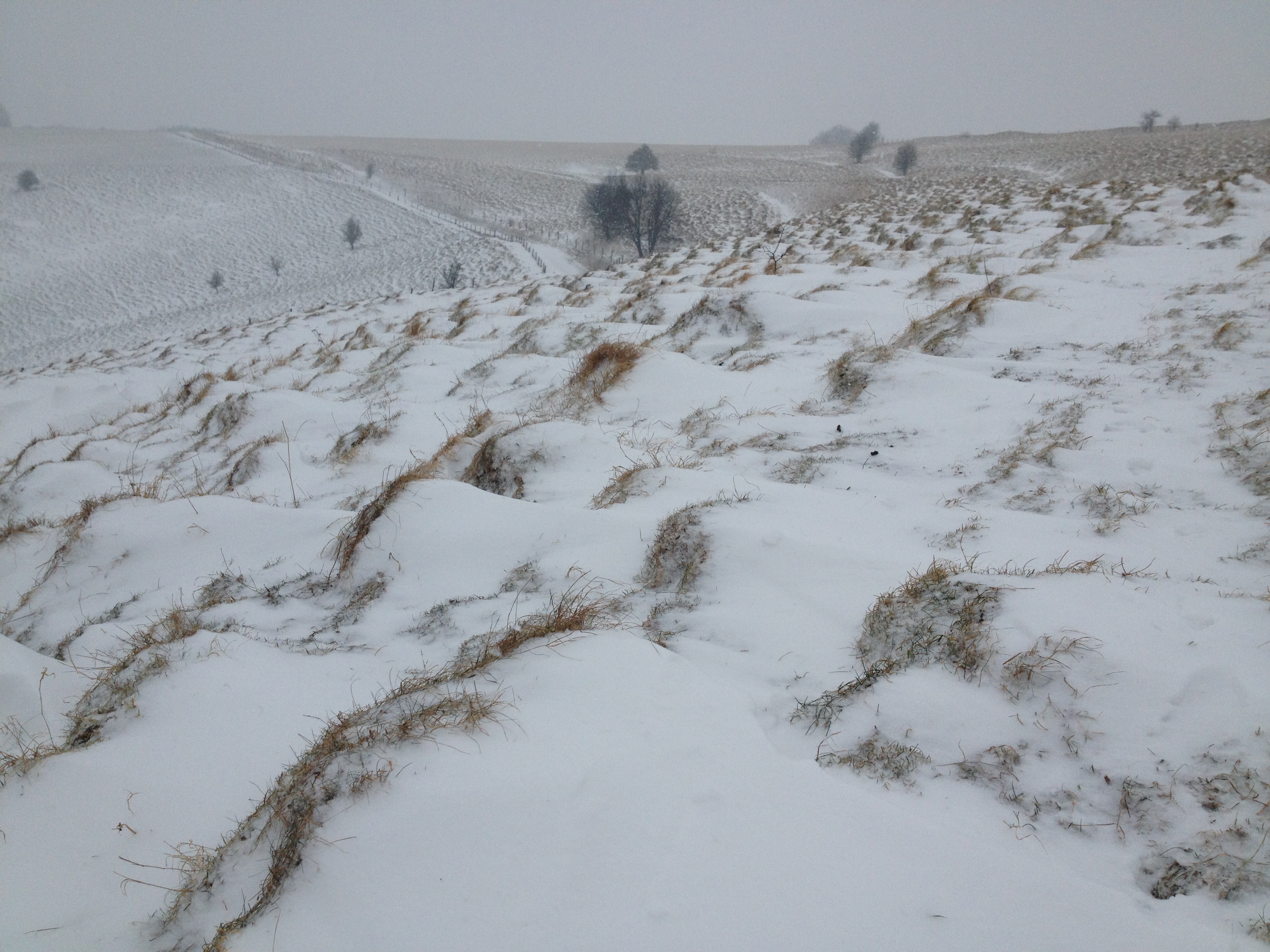
On the ridgeway track, walking is hard. One moment we are on new sparkling hills above the hedges, the next, sunk to our waists. Some of the drifts are above head height. The children and dog roll and commando crawl over the tops.
A song thrush sits on a drift as if oblivious to the blast. Its spotted breast and chestnut feathers, the small embers of a fire nearly gone out. It is fluffed and motionless. My husband scoops it up lightly and pockets it. Perhaps we can warm, then feed and water it at home.
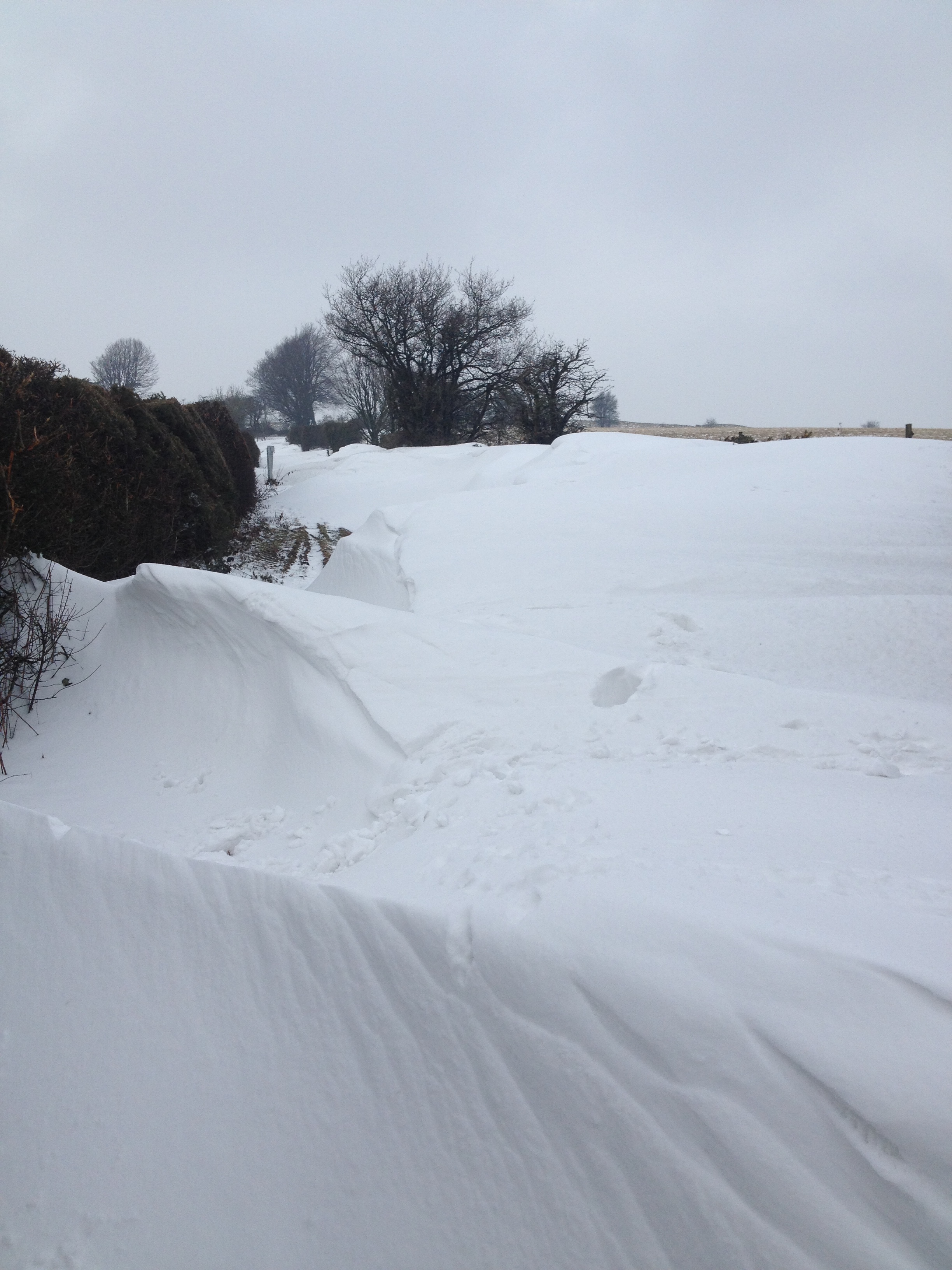
By the time we make the high, turf earthworks, its tiny heart has stopped. I thumb its breastbone and find it sharp and exposed as wind-carved drifts. It is all feather. I place it on the bank of the ramparts and hope it died warm and unafraid of us, or this furious winter rage. Renowned be thy grave, I think.
When we get home, our knee-deep footprints have been filled in and smoothed over as if with a palette knife. There are redwings in the garden.
A week later, post-thaw and there are still Holstein patches of snow – lines demarking footpaths or underscoring hedgerows as if someone tried to highlight a landscape without thought to where the light was coming from. Mini ice floes rinse noisily down the lane.
A raven flies over, calling like a school ruler twanged on a desktop. On the hillfort, the spinal column, knuckles and cartilage of drifts remain, like scattered snow bones among the wings of thrushes. The yellow of a lone flowering gorse bush, the inside of a singing bird’s open bill.
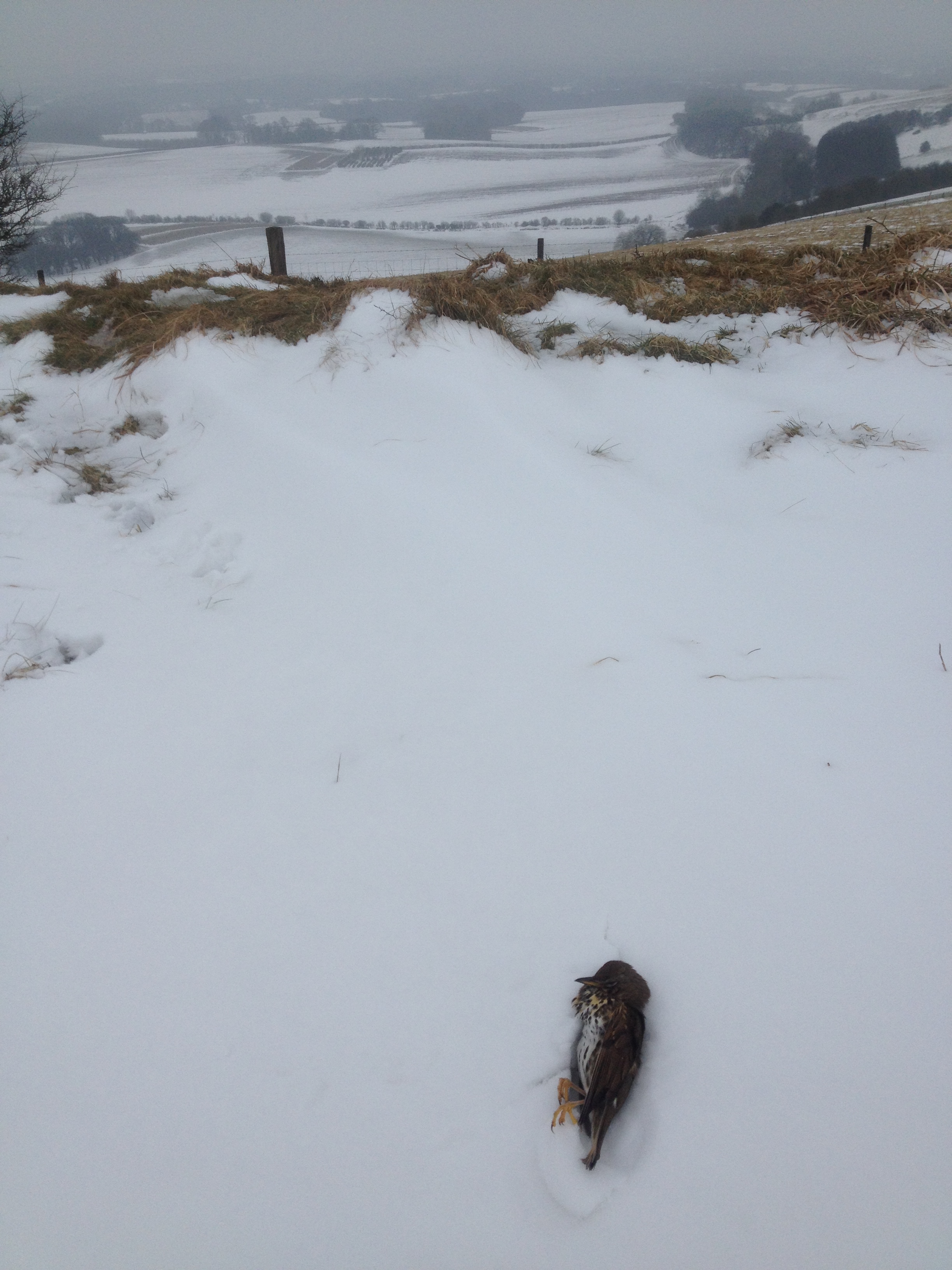
Leave a comment